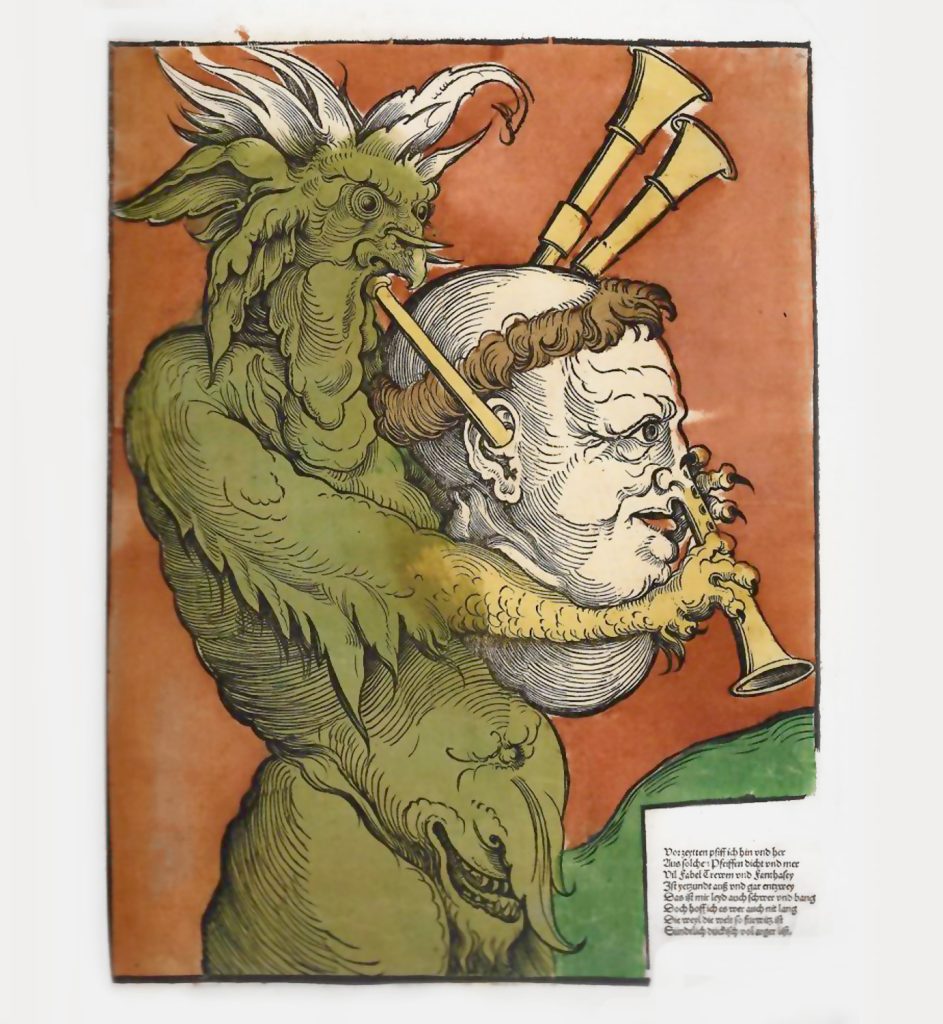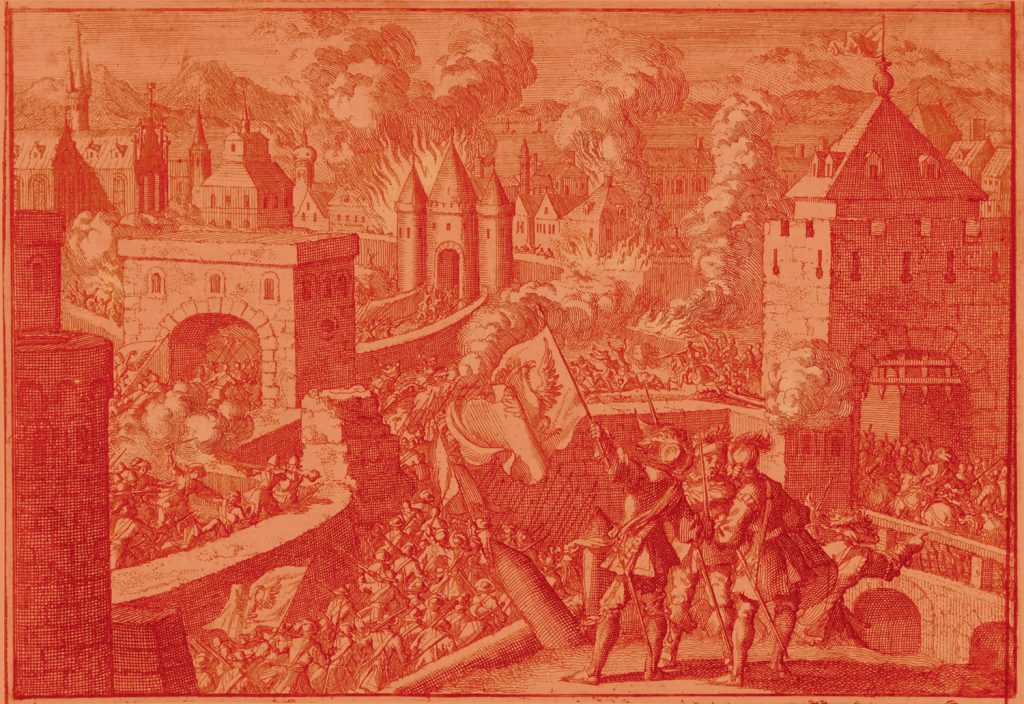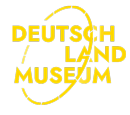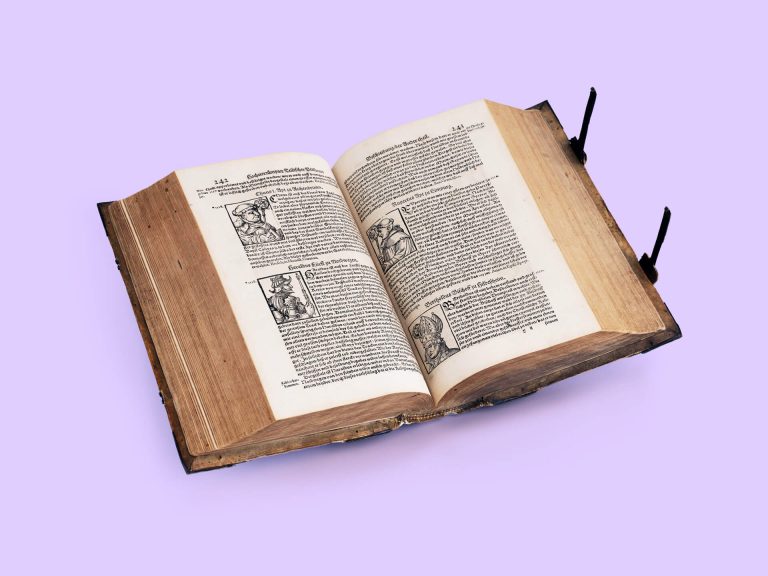
The Reformation
1517
The Reformation
Church schism and religious wars
In the sixteenth century, critics of the Roman Catholic Church accused it of seeking to enrich itself at the expense of the faithful. The invention of the printing press meant that this criticism spread quickly. The ensuing Reformation caused schism in the Roman Catholic Church and a number of violent conflicts.
Martin Luther and the Reformation
Publishing 95 theses critical of Church practice in 1517, the monk Martin Luther focussed especially on the sale of indulgences, which promised the remission of sins through monetary payments and pious works. Far from seeking to split the Church, Luther hoped to initiate its renewal (lat. reformatio).
The new teachings of Luther and his fellow Reformers were disseminated rapidly thanks to the earlier invention of the moveable type printing press by Johannes Gutenberg. This new technology reduced the time and cost involved in producing texts for mass market sale, thereby revolutionizing the dissemination of information and knowledge. The publication of Luther’s translation of the Bible into German also exerted a major influence on the development of standardized German.
Dividing European Christianity into Roman Catholicism and Protestantism, the Reformation also sparked a number of armed conflicts, in which the belligerents were moved by a mixture of religious, political and economic motives. One such cataclysm was the Peasants’ War of 1524/25. A period of peace was not established until 1555, when the Peace of Augsburg established the authority of secular princes to determine the religion of their realm.

Irreconcilable differences led to a split in society: Luther’s opponents saw him as an instrument of the devil Woodcut by Erhard Schön, 1530s (source: Sammlung Schloss Friedenstein Gotha)
The Thirty Years’ War
Simmering religious tensions erupted in a war in 1618, which was fought until 1648. Although beginning as a religious conflict, the Thirty Years’ War soon developed into a general conflagration fought to decide which power would dominate Europe. The consequences of the prolonged conflict were devastating: many German territories were depopulated by destruction and famine. Massacres such as that wreaked in the aftermath of the assault on Magdeburg provoked horror throughout Europe.

The conquest of Magdeburg in 1631 established “Magdeburgization” as a synonym for total destruction Coloured etching by Jan Luyken, 1701 (source: Rijksmuseum)
Exhausted by thirty years of bloodshed, the European powers ended the conflict with the Treaty of Westphalia. The former belligerents recognized each other as equal and sovereign states and accepted the equality of the confessions. The Peace of Westphalia thus laid the foundations for modern international law.
Share article
1517
Martin Luther’s criticism of the practice of selling indulgences, published in 95 theses, acted as the trigger for the Reformation.
Epochs in the museum

About the Deutschlandmuseum
An immersive and innovative experience museum about 2000 years of German history
The forest of the Varus Battle
Knowledge is just one click away
Embark on a journey through 2,000 years of German history. One country, 12 epochs. You’re invited to experience the Epoch Weeks at the Deutschlandmuseum. Every week we showcase an epoch that is also on display in the Deutschlandmuseum.
FAQ
The Reformation began in 1517 with the publication of Martin Luther’s 95 theses criticizing the practice of the Roman Catholic Church and in particular the sale of indulgences. A key moment was the Peace of Augsburg in 1555, which guaranteed the territorial lords’ right to choose the confessional identity of their realm. It was not until the Peace of Westphalia in 1648 that the main Christian denominations were officially recognized as equal and the Reformation was concluded.
The term “Reformation” comes from Latin reformatio meaning “renewal”. Denouncing the abuses and corruption of the Roman Catholic Church in 1517, the monk Martin Luther set out a programme of Church renewal. The anger of Luther and other Reformers was directed primarily against practices like the sale of indulgences, deployed by the Church to enrich itself at the cost of the faithful, and Papal claims to secular power. The Reformation led to the division of the church into different confessions.
Moveable type printing meant that it was easier and more affordable than ever before to print books and pamphlets in large numbers. Printing facilitated and accelerated the dissemination of knowledge and information, enabling the reformers to spread their message across a wide popular audience.


